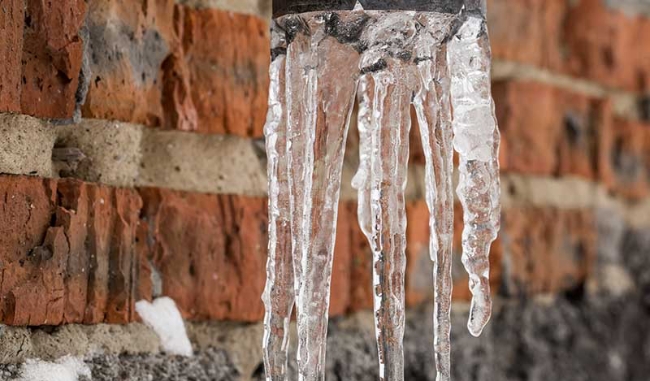Important Advice to Prevent Frozen Pipes in Winter
Important Advice to Prevent Frozen Pipes in Winter
Blog Article
Presented here further down you can locate a good deal of dependable points around Preventing and dealing with frozen pipes.

Winter can damage your pipes, specifically by freezing pipelines. Right here's exactly how to stop it from happening and what to do if it does.
Introduction
As temperature levels decrease, the threat of frozen pipelines increases, potentially resulting in costly fixings and water damage. Understanding how to avoid frozen pipelines is crucial for house owners in cold climates.
Prevention Tips
Insulating at risk pipelines
Wrap pipelines in insulation sleeves or use heat tape to safeguard them from freezing temperatures. Focus on pipes in unheated or exterior areas of the home.
Home heating techniques
Keep indoor spaces adequately warmed, particularly areas with plumbing. Open cupboard doors to permit warm air to flow around pipes under sinks.
How to determine icy pipelines
Try to find decreased water flow from faucets, unusual smells or noises from pipes, and noticeable frost on exposed pipes.
Long-Term Solutions
Architectural modifications
Think about rerouting pipes far from outside wall surfaces or unheated locations. Include additional insulation to attic rooms, cellars, and crawl spaces.
Updating insulation
Invest in top notch insulation for pipes, attic rooms, and walls. Appropriate insulation aids preserve regular temperatures and lowers the threat of frozen pipes.
Shielding Outside Plumbing
Yard tubes and exterior taps
Detach and drain pipes yard hoses prior to winter months. Install frost-proof spigots or cover exterior taps with shielded caps.
Recognizing Icy Pipelines
What triggers pipelines to ice up?
Pipes ice up when revealed to temperatures below 32 ° F (0 ° C) for expanded periods. As water inside the pipes ices up, it broadens, putting pressure on the pipe wall surfaces and potentially creating them to burst.
Dangers and problems
Icy pipes can lead to supply of water interruptions, home damage, and costly repairs. Ruptured pipelines can flood homes and cause considerable architectural damage.
Signs of Frozen Pipeline
Recognizing frozen pipelines early can stop them from rupturing.
What to Do If Your Pipes Freeze
Immediate actions to take
If you believe icy pipelines, maintain taps available to eliminate stress as the ice melts. Utilize a hairdryer or towels taken in warm water to thaw pipes slowly.
Conclusion
Avoiding icy pipelines calls for positive actions and fast reactions. By recognizing the reasons, indications, and safety nets, home owners can shield their plumbing throughout winter.
5 Ways to Prevent Frozen Pipes
Drain Outdoor Faucets and Disconnect Hoses
First, close the shut-off valve that controls the flow of water in the pipe to your outdoor faucet. Then, head outside to disconnect and drain your hose and open the outdoor faucet to allow the water to completely drain out of the line. Turn off the faucet when done. Finally, head back to the shut-off valve and drain the remaining water inside the pipe into a bucket or container. Additionally, if you have a home irrigation system, you should consider hiring an expert to clear the system of water each year.
Insulate Pipes
One of the best and most cost-effective methods for preventing frozen water pipes is to wrap your pipes with insulation. This is especially important for areas in your home that aren’t exposed to heat, such as an attic. We suggest using foam sleeves, which can typically be found at your local hardware store.
Keep Heat Running at 65
Your pipes are located inside your walls, and the temperature there is much colder than the rest of the house. To prevent your pipes from freezing, The Insurance Information Institute suggests that you keep your home heated to at least 65 degrees, even when traveling. You may want to invest in smart devices that can keep an eye on the temperature in your home while you’re away.
Leave Water Dripping
Moving water — even a small trickle — can prevent ice from forming inside your pipes. When freezing temps are imminent, start a drip of water from all faucets that serve exposed pipes. Leaving a few faucets running will also help relieve pressure inside the pipes and help prevent a rupture if the water inside freezes.
Open Cupboard Doors
Warm your kitchen and bathroom pipes by opening cupboards and vanities. You should also leave your interior doors ajar to help warm air circulate evenly throughout your home.

We were shown that article about 6 Ways to Prevent Frozen Pipes from a good friend on our other blog. Sharing is caring. Helping people is fun. I am grateful for being here. Come back soon.
Hire A Pro Report this page